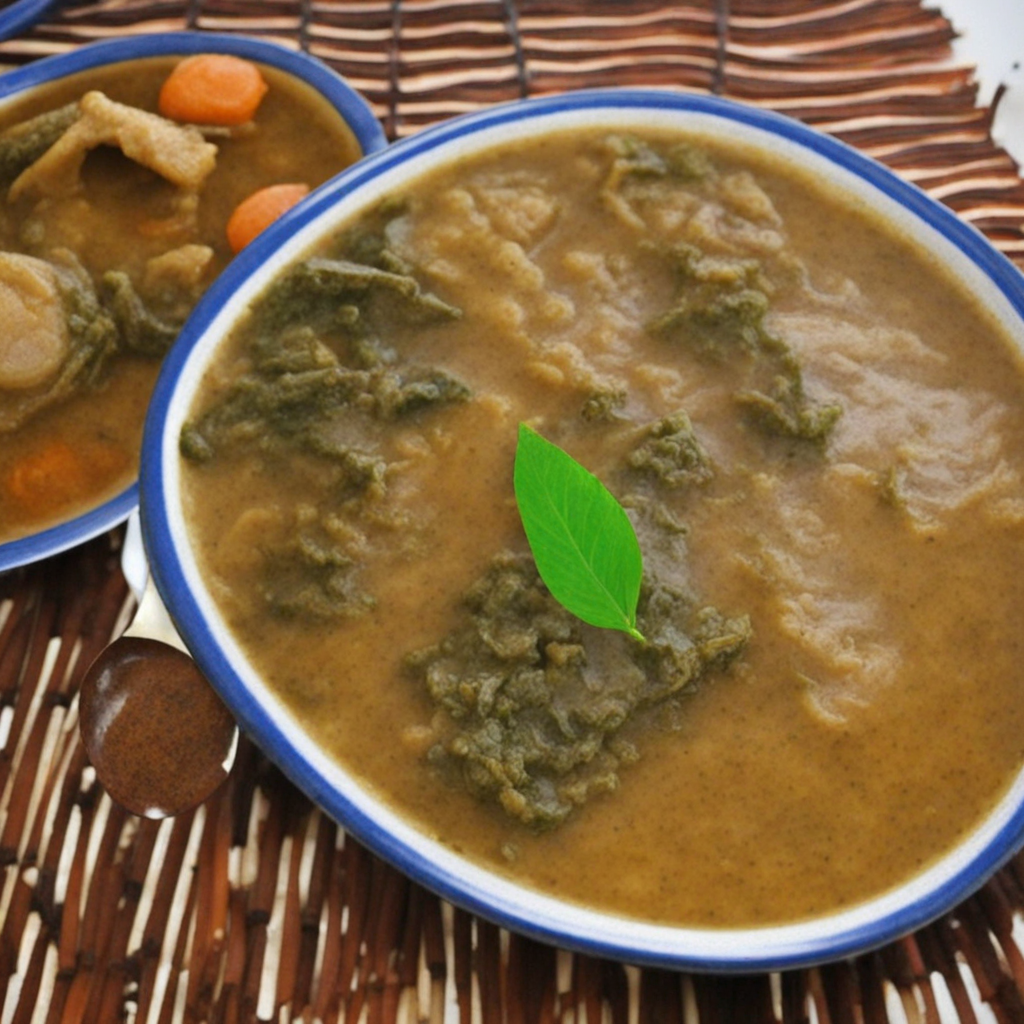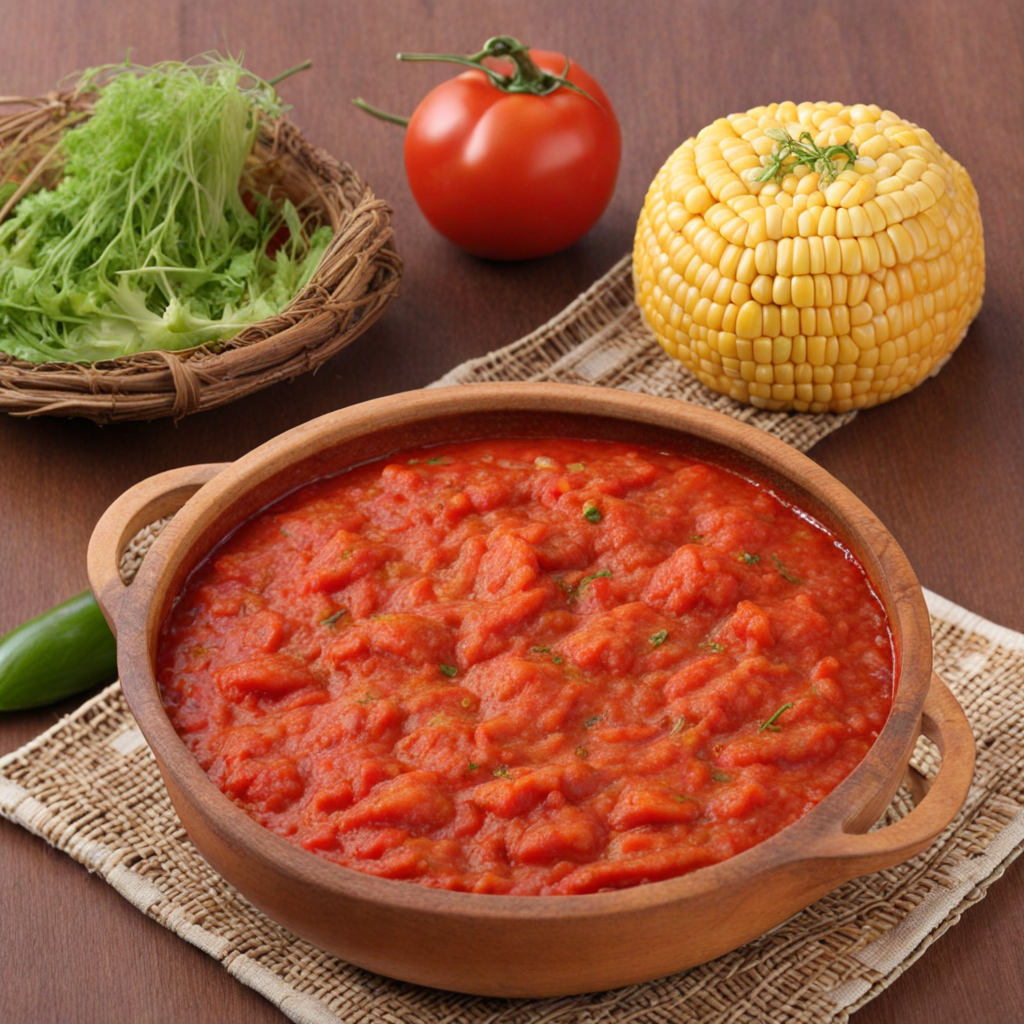Atassi
Atassi is a traditional dish from Benin that showcases the rich flavors and vibrant culinary heritage of West Africa. This dish typically features a base of fermented corn, which is cooked and then mashed to create a smooth, savory porridge-like consistency. The fermentation process not only enhances the flavor but also adds a slight tanginess, giving Atassi a unique taste profile that sets it apart from other staple foods in the region. The dish is often served warm, making it a comforting choice for any meal of the day. To elevate the flavor of Atassi, it is commonly paired with various accompaniments such as spicy stews, grilled meats, or sautéed vegetables. These sides add depth to the dish, allowing for a harmonious blend of textures and tastes. The spices used in the stews often include a mix of local ingredients like chili peppers, garlic, and ginger, which contribute to a warm and inviting heat that complements the mildness of the corn base. Atassi is not just a meal; it is a cultural experience that connects those who share it. It is often enjoyed during communal gatherings and celebrations, reflecting the importance of food in Beninese culture. As you savor Atassi, you will appreciate the intricate balance of flavors and the deep-rooted traditions that this dish embodies, making it a delightful discovery for any adventurous palate.
How It Became This Dish
The History of Atassi: A Culinary Gem from Benin #### Origins of Atassi Atassi, a cherished dish from Benin, has its roots deeply embedded in the rich tapestry of West African culinary traditions. The dish primarily consists of a combination of fermented corn and cassava, which are staple ingredients in the region. The origins of Atassi can be traced back to the indigenous communities of Benin, where the practice of fermenting grains and tubers has been a common method for preserving food and enhancing flavors for centuries. Fermentation, as a food preservation technique, has been utilized by various cultures worldwide, but in West Africa, it takes on a unique character. In the case of Atassi, the fermentation process not only aids in preservation but also introduces a complex flavor profile that distinguishes the dish. The use of local ingredients, such as maize and cassava, speaks to the agrarian lifestyle of the Beninese people, who have cultivated these crops for generations. #### Cultural Significance Atassi is more than just a dish; it is a symbol of community and tradition. In Benin, food serves as a medium for social interaction, and Atassi plays a significant role in various communal gatherings and celebrations. The preparation of Atassi often involves multiple family members or community members, reinforcing bonds and relationships. Sharing this dish during festivities, weddings, and religious ceremonies underscores its importance in the cultural fabric of the nation. Moreover, Atassi carries a sense of identity for the people of Benin. It represents the culinary practices of the Fon and Yoruba peoples, among others, who inhabit the region. The dish not only reflects local agricultural practices but also encapsulates the historical influences that have shaped Benin's cuisine, including the impact of trade, colonization, and globalization. #### The Development of Atassi Over Time As with many traditional dishes, Atassi has evolved over time, adapting to changes in society and the environment. The introduction of new cooking techniques and ingredients, brought about by colonial influences and globalization, has altered the way Atassi is prepared and consumed. While the core ingredients remain the same, variations have emerged in preparation methods and accompanying side dishes. In the past, Atassi would be prepared using traditional methods, with families engaging in the labor-intensive process of fermenting maize and cassava. Today, while some still adhere to traditional practices, others have embraced modern conveniences. For instance, the fermentation process can now be expedited with the use of commercial yeast, allowing for a quicker turnaround time in recipe preparation. Additionally, the dish is often complemented with sauces or stews that feature meats, vegetables, and spices, reflecting contemporary tastes and preferences. The globalization of food culture has also led to the incorporation of international flavors into Atassi. While the dish maintains its indigenous roots, it is not uncommon to find variations that include influences from neighboring countries or even Western cuisine. This culinary fusion is a testament to the dynamic nature of food and its ability to adapt to changing contexts, making Atassi a continually evolving dish. #### Global Recognition and Influence As awareness of West African cuisine grows, Atassi has begun to find a place on the global culinary stage. Chefs and food enthusiasts outside of Benin are exploring the complexities of this dish, often incorporating it into fusion menus or highlighting it at cultural festivals. This newfound recognition serves to elevate the status of Atassi as not just a local delicacy but as an important representative of Benin's culinary heritage. Restaurants that focus on West African cuisine are increasingly including Atassi in their offerings, providing a platform for cultural exchange and education. Food bloggers and social media influencers are also playing a pivotal role in promoting Atassi, sharing recipes and personal stories that celebrate the dish’s cultural significance. This exposure has sparked interest among culinary explorers, who are eager to learn about the traditions and stories behind Atassi. #### Nutritional Value and Health Benefits In addition to its cultural and historical significance, Atassi boasts a range of nutritional benefits. The fermentation process not only enhances the flavor but also increases the bioavailability of nutrients, making the dish a wholesome option. Corn and cassava are both rich in carbohydrates, providing energy, while the fermentation process introduces beneficial probiotics that promote gut health. Furthermore, Atassi can be served with a variety of accompaniments, such as vegetable stews or protein-rich sauces, enhancing its nutritional profile. This versatility allows it to cater to a wide range of dietary preferences, making it a suitable choice for vegetarians and meat-eaters alike. #### Conclusion Atassi is a dish that encapsulates the essence of Benin’s culinary traditions, weaving together history, culture, and community. Its origins reflect the agricultural practices of the region, while its evolution demonstrates the adaptability of food in response to changing societal dynamics. As Atassi gains recognition on a global scale, it stands as a testament to the richness of West African cuisine and the importance of preserving culinary heritage for future generations. In celebrating Atassi, we not only honor the traditions of Benin but also embrace the broader narrative of food as a means of connection, identity, and cultural expression. The journey of Atassi from its humble beginnings to its emerging status on the global culinary stage is a reminder of the power of food to bring people together and tell stories that transcend borders and time.
You may like
Discover local flavors from Benin







